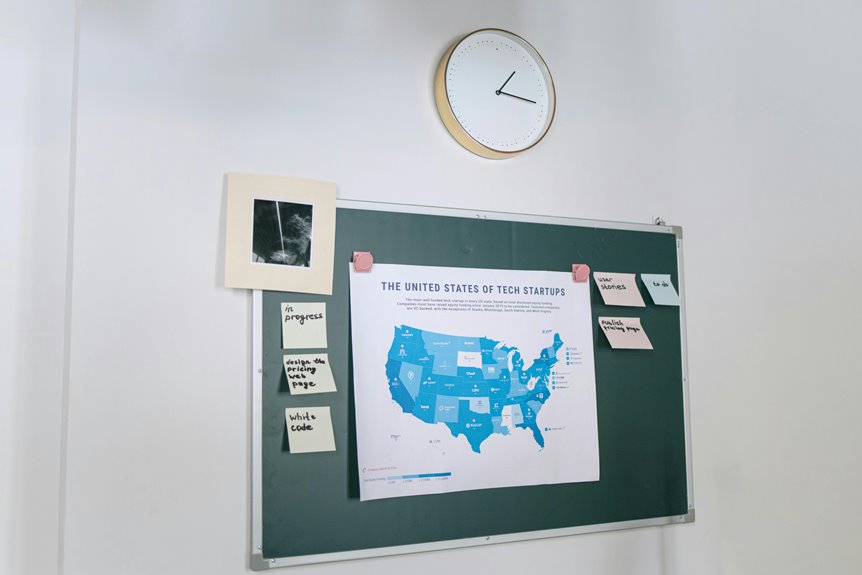Designing Agile Workflows 3332856678

Designing agile workflows requires a methodical approach that embraces flexibility and collaboration. Organizations must assess their current processes to identify bottlenecks and inefficiencies. By integrating appropriate tools, teams can enhance their adaptability and communication. A focus on iterative feedback fosters continuous improvement. This raises the question: what specific strategies can organizations adopt to ensure their workflows remain responsive to change and aligned with customer needs?
Understanding Agile Methodologies
Although Agile methodologies have gained widespread popularity, their core principles remain rooted in flexibility and collaboration.
Agile frameworks prioritize iterative feedback and continuous improvement, fostering an environment where team collaboration thrives. By encouraging customer involvement and adaptive planning, cross-functional teams can effectively focus on value delivery.
This approach empowers teams to respond to change, ensuring a dynamic and engaging workflow that embraces freedom and innovation.
Key Principles of Agile Workflow Design
Effective Agile workflow design hinges on several key principles that promote adaptability and collaboration.
Embracing agile principles leads to enhanced workflow optimization through:
- Continuous feedback loops that encourage refinement.
- Cross-functional teams that foster diverse perspectives.
- Iterative processes that allow for rapid adjustments.
These elements empower teams to thrive in dynamic environments, ensuring freedom and responsiveness to change.
Assessing Current Processes for Improvement
In assessing current processes for improvement, teams should collaboratively identify workflow bottlenecks that hinder progress.
By analyzing team efficiency and measuring process outcomes, organizations can uncover areas for enhancement.
This iterative approach fosters continuous improvement, adapting workflows to better meet evolving needs.
Identify Workflow Bottlenecks
Identifying workflow bottlenecks is crucial for teams striving to enhance their processes and productivity.
Employing effective bottleneck identification techniques can lead to significant improvements. Teams can collaboratively explore:
- Continuous feedback loops
- Visualization of task flows
- Regular process reviews
These workflow optimization strategies empower teams to adapt and iterate, ultimately fostering an environment that embraces freedom and efficiency in achieving their goals.
Analyze Team Efficiency
After recognizing workflow bottlenecks, the next step involves analyzing team efficiency to pinpoint areas for improvement.
This process encourages collaboration, focusing on team dynamics and utilizing performance metrics to understand strengths and weaknesses.
Measure Process Outcomes
Measuring process outcomes is essential for teams seeking to enhance their workflows and achieve meaningful improvements.
To effectively evaluate outcomes, teams can focus on:
- Defining clear process metrics to gauge efficiency.
- Conducting regular outcome evaluations to identify trends.
- Collaborating on iterative adjustments to refine workflows.
This adaptive approach fosters a culture of continuous improvement, empowering teams to explore innovative solutions.
Implementing Agile Tools and Technologies
In exploring the implementation of Agile tools and technologies, organizations must consider the selection of suitable tools that align with their specific needs.
Additionally, seamless integration with existing systems is essential to maintain workflow continuity.
Finally, providing adequate training and ongoing support will empower teams to fully leverage these tools for enhanced productivity.
Selecting Suitable Tools
Selecting suitable tools for implementing agile workflows is crucial, as the right technologies can significantly enhance team collaboration and productivity.
A thorough tool evaluation and software comparison can guide teams in making informed choices.
Consider these factors:
- User-friendliness
- Integration capabilities
- Customization options
Integration With Existing Systems
Choosing the right tools sets the foundation for effective agile workflows, but the real challenge lies in ensuring these tools integrate seamlessly with existing systems. Focusing on system compatibility and data synchronization fosters a collaborative environment, allowing teams to adapt and iterate more efficiently.
| Key Considerations | Impact on Agile Workflows |
|---|---|
| System Compatibility | Enhances integration |
| Data Synchronization | Reduces errors |
| User Experience | Improves adoption |
| Scalability | Supports growth |
Training and Support Needed
Effective implementation of agile tools and technologies hinges on comprehensive training and robust support systems.
To foster an adaptive environment, organizations should consider the following training techniques and support systems:
- Interactive workshops to engage teams.
- Continuous feedback loops for iterative improvement.
- Accessible resources and documentation for ongoing assistance.
These strategies cultivate a liberated atmosphere conducive to collaboration and innovation, empowering teams to thrive within agile frameworks.
Fostering a Collaborative Team Environment
While many factors contribute to a successful agile workflow, fostering a collaborative team environment stands out as essential for maximizing productivity and creativity.
Effective team communication and trust building are foundational in creating an atmosphere where ideas can flourish. By encouraging open dialogue and mutual respect, teams can adapt and iterate efficiently, empowering each member to contribute freely and collaboratively toward shared goals.
Measuring Success and Iterating for Growth
Measuring success in agile workflows requires a dynamic approach that embraces continuous feedback and adaptation.
To effectively gauge progress and refine growth strategies, teams should focus on:
- Success Metrics: Define clear, measurable outcomes.
- Regular Reviews: Schedule iterative assessments to analyze performance.
- Adaptive Changes: Implement adjustments based on data-driven insights.
This collaborative framework empowers teams to thrive and innovate in a free-spirited environment.
Conclusion
In conclusion, designing agile workflows is a journey that demands continuous refinement and collaboration. By embracing key principles and leveraging appropriate tools, organizations can break down silos and enhance team dynamics. As teams assess their processes and iterate based on measurable outcomes, they not only improve efficiency but also deliver greater value to customers. Ultimately, by fostering a culture of adaptability, companies can stay ahead of the curve and ensure they are always ready to roll with the punches.



